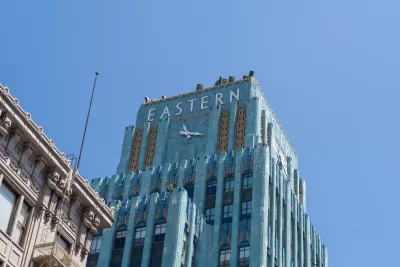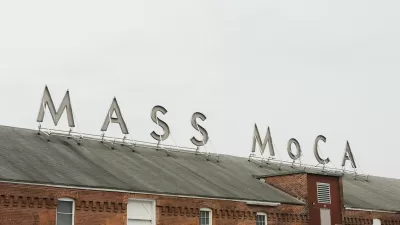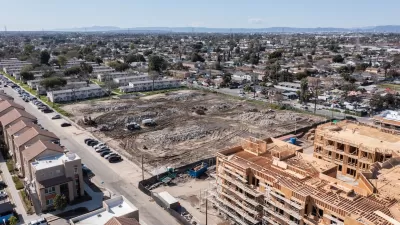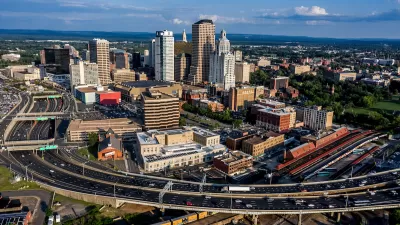An adaptive reuse ordinance limited to the city’s downtown core helped create roughly 12,000 units of new housing.

The Los Angeles Department of City Planning has released details about its new Citywide Adaptive Reuse program, calling it “an innovative strategy that facilitates the conversion of existing underutilized or historically significant buildings into housing.”
The program would expand on an existing adaptive reuse initiative that has been in place in downtown Los Angeles since 1999 and is credited with creating over 12,000 housing units in former garment factories, warehouses, and other vacant downtown buildings.
According to the city’s press release, “Drafted with post-pandemic economic recovery in mind, the Adaptive Reuse Ordinance incentivizes the conversion of existing commercial buildings to housing, providing a faster review process for older buildings, allowing for flexible unit sizes, and allowing buildings to retain their building shell while the interior may be converted to housing.”
City officials say the ordinance will promote infill development, historic preservation, and mixed use, lowering carbon emissions and extending the life of existing buildings. The program is part of the Citywide Housing Incentive Program, a six-part plan for meeting the city’s state-mandated housing goals.
FULL STORY: City Planning Releases New Proposed Incentives to Repurpose Vacant Commercial Spaces for Housing

Alabama: Trump Terminates Settlements for Black Communities Harmed By Raw Sewage
Trump deemed the landmark civil rights agreement “illegal DEI and environmental justice policy.”

Planetizen Federal Action Tracker
A weekly monitor of how Trump’s orders and actions are impacting planners and planning in America.

The 120 Year Old Tiny Home Villages That Sheltered San Francisco’s Earthquake Refugees
More than a century ago, San Francisco mobilized to house thousands of residents displaced by the 1906 earthquake. Could their strategy offer a model for the present?

LA’s Tree Emergency Goes Beyond Vandalism
After a vandal destroyed dozens of downtown LA trees, Mayor Karen Bass vowed to replace them. Days later, she slashed the city’s tree budget.

Sacramento Leads Nation With Bus-Mounted Bike Lane Enforcement Cameras
The city is the first to use its bus-mounted traffic enforcement system to cite drivers who park or drive in bike lanes.

Seattle Voters Approve Social Housing Referendum
Voters approved a corporate tax to fund the city’s housing authority despite an opposition campaign funded by Amazon and Microsoft.
Urban Design for Planners 1: Software Tools
This six-course series explores essential urban design concepts using open source software and equips planners with the tools they need to participate fully in the urban design process.
Planning for Universal Design
Learn the tools for implementing Universal Design in planning regulations.
Ada County Highway District
Clanton & Associates, Inc.
Jessamine County Fiscal Court
Institute for Housing and Urban Development Studies (IHS)
City of Grandview
Harvard GSD Executive Education
Toledo-Lucas County Plan Commissions
Salt Lake City
NYU Wagner Graduate School of Public Service





























